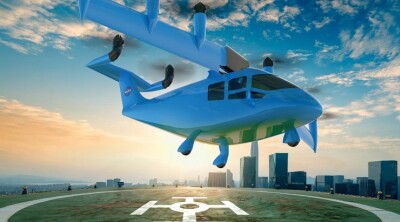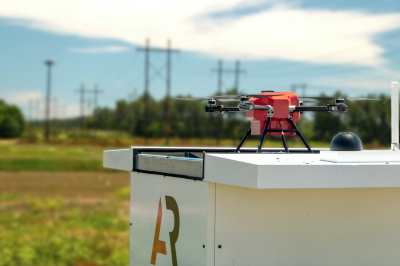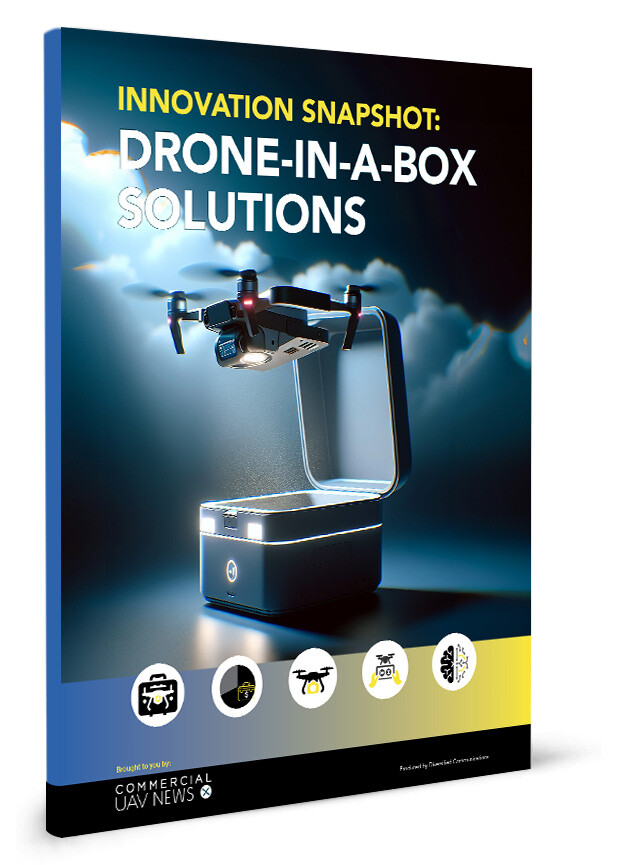France’s drone market is one of the largest in Europe, with a growth expectancy of over $43 billion in 2024 at a CAGR of 20.5%. Currently, the country has a great focus on drones for the military, with an investment of $5.4 billion in drones through 2030 as part of the country’s military programming law to develop a French loitering munitions industry by the end of this decade, as well as achieving swarm-flight capability.
However, that’s not all that there is to it, as there are multiple drone companies across various industries in France, with some of them being well-known worldwide, such as Paris-headquartered Parrot. The latest installment of our UAVs Across Europe series, this article will show how France is making a difference to propel drone technology forward.
Investigating a mysterious sinkhole
Lyon, the Roman city called Lugdunum in 43 BC, features many tourist attractions, such as the Théâtres Romains de Fourvière, the Jardin Archéologique, and the Aqueduc Romain du Gier. On the one hand, this is great for tourism, but on the other, this can pose a safety concern. Why? Well, if the earth opens like a sinkhole it may lead to the city’s Roman structures underneath, such as disused sewers, old buildings, or storage spaces.
To inspect an opened hole that could expand and potentially damage a building in a residential part of the city, Xenodrone, a specialist inspection company, decided to use drones to gather the critical data the authorities required. Asked to determine if there was an immediate risk of further land subsidence and if the cavern was extending towards the building, Julien Gay, head of Xenodrone, decided that Flyability’s Elios 3 was the right choice for the job at hand.
Flying the Elios 3 inside the hole allowed Julien to collect lidar data and generate a 3D model for detailed analysis, with the initial results showing that the cavity was huge, going 6 meters down. While sending someone down the hole would take more time, it would also mean an increase in risk and safety measures – by sending the drone in, the inspection only took 4 minutes to complete. The final deliverable allowed the local authorities to determine the level of risk to the building near the hole and give surveyors an idea of what was in the cavern.
“We pride ourselves on responding quickly, and when I was a firefighter, I remember seeing cases like this where speed is of the essence,” Julien said. “Now with the Elios 3, we are able to complete building inspections on the day-to-day, but it is clear our services can be deployed in emergency response to gather the critical data for making decisions.”
Transforming power line inspections
Airpelago, a Sweden-based software company and service provider with BVLOS authorization, is using drones to perform low-, medium-, and high-voltage power line inspections worldwide. The company offers a complete flight solution, Airpelago Power, that turns drones into “autonomous bees” to conduct large inspection projects with 100% autonomous flights.
France’s power distribution network is one of the largest in Europe, spanning over 800,000 miles, and requires regular inspections to ensure reliable electricity delivery. By replacing helicopters with automated drones, Airpelago claims to save over 4,000 tons of carbon dioxide annually, and detect up to five times more defects, leading to a higher quality grid and proactive maintenance.
In 2022, Airpelago worked with a potential client in France, near Valence, south of Lyon, to demonstrate its technology throughout approximately 100 km of power lines in diverse terrains, ranging from flat farmlands to steep hillsides. By taking 6 high-quality images of each pole from different angles, Airpelago was able to produce deliverables that not only met the client’s requirements but also surpassed initial expectations by completing the job in two days only.
Preserving and enhancing cultural heritage
From 3D laser scanning to digitalization, and 3D modeling to virtual and augmented reality, Art Graphique & Patrimoine (AGP) is a company with 30 years of experience in using digital technologies for the benefit of art and historical monuments. The company works on around 100 projects per year and has already intervened in 22 countries.
Through the combination of laser and photogrammetric shooting techniques, AGP can quickly record from the largest to the smallest of buildings in high definition for preservation, restoration, maintenance, or enhancement of heritage. Some of the most emblematic projects from AGP include the Louvre Museum, the Palace of Versailles, the Basilica of Saint-Denis, and the reconstruction of Notre Dame after the fire in 2019.
To complete many of these projects, AGP uses a combination of land and aerial technologies. For aerial captures, the use of drones has almost become paramount, since costs are much lower, and deliverables generation is much faster than what helicopters offer. They make it possible to understand a site as a whole and obtain a precise large-scale representation of it. AGP’s surveying engineers choose the most suitable methods according to the surface area of the site and the types of renderings desired by the client. For large-scale sites, lidar is the first choice since it makes it possible to find archaeological traces even through the canopy and develop a 2D or 3D model of the entire site.
Monitoring boat activity
In 2023, to increase surveillance of shipping lanes and detect potential emissions violations at one of the most bustling shipping lanes on the planet, EMSA contracted Vienna-based Schiebel to supply its S-100 drones for use in the added missions from France’s CROSS Gris-Nez coast guard and naval observation station. Situated between Calais and Boulogne-sur-Mer, the French base monitors boat activity in the waters of France's English Channel.
Equipped with sniffer sensors to collect fuel emissions data from vessels, the S-100 drones ensure ships comply with the 2020 rule restrictions. Additionally, the drones' video feed will enable authorities to monitor various activities, including observation of fishing craft to enforce catch quotas. They have a maximum flight capacity of 200 kilometers or up to six hours using a normal heavy fuel tank, and up to 10 hours with a larger reserve tank.
“This area of sea is one of the busiest shipping lanes in the world, where 24/7 monitoring of all maritime activities is essential. Schiebel’s S-100 has supported numerous maritime authorities to date, with EMSA being one of our most prestigious customers,” said Hans Georg Schiebel, Chairman of the Schiebel Group.
Want more insights on UAVs Across Europe?
Commercial UAV Expo Europe will bring the commercial UAS ecosystem together. The event will serve as the pivotal platform for commercial drone professionals across Europe to explore, connect, and innovate within the rapidly evolving world of UAS.















Comments